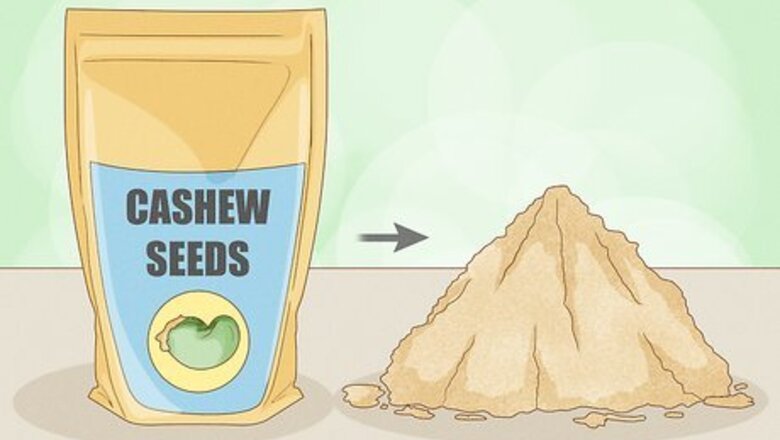
views
Planting the Cashew Seed
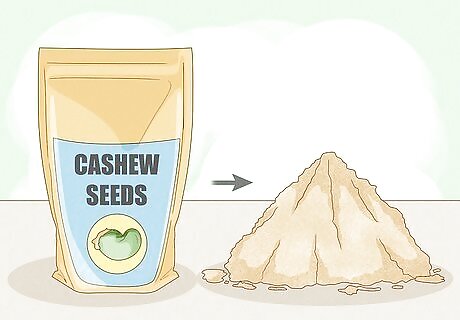
Plant your fresh cashew seed in sandy soil. Sandy soil ensures a lack of water logging. Avoid clay based soil and whatever type of soil you use, ensure that it allows for free flowing irrigation as water-logging can lead to damaging the tree. Buy cashew seeds specifically for growing from gardening supply stores. Cashews sold for consumption, even raw ones, are not viable because their protective shell has been removed. Always wear gloves when handling the seeds, so you do not touch them directly. Cashew seeds contain irritants similar to poison ivy, that can cause itchy skin.
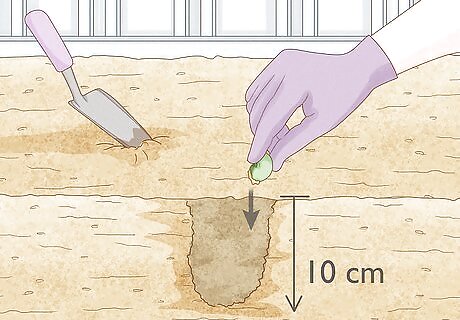
Plant your seeds 10 centimetres (3.9 in) deep to make room for expansion of roots. If you plant multiple trees, plant them 30 feet (9.1 m) away from each to ensure adequate room for growth. Using the freshest seed possible will provide the best results so plant as soon as you get hold of it.
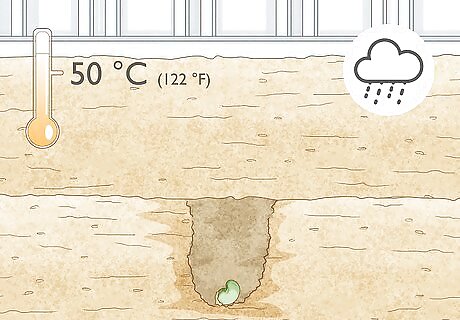
Use an area that receives moderate rainfall. Cashews can’t sustain in areas with heavy rainfall or wind but can thrive in extremely hot temperatures up to 50 °C (122 °F). Because of this, tropical areas that are very warm and receive medium levels of rainfall are ideal. If there is too much rain, the roots will drown and the tree will die.

Ensure your tree has access to at least 6 hours of sunlight per day. Cashew trees thrive in warm, sunny climates and if the tree doesn’t receive this much sunlight then it will grow slowly and eventually may not even flower. Ideal locations for growing cashew trees include: Open fields Farmland On top of hills that will not be too windy
Growing the Cashew
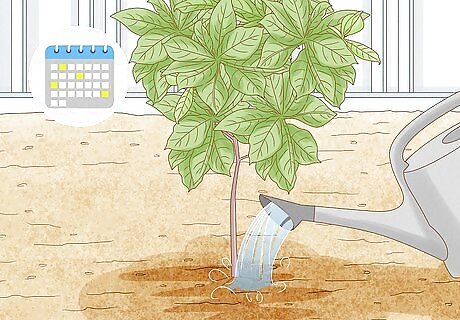
Water the tree once a week while it is still young. This is to ensure that the root system develops adequately. Once it has matured, water the tree once a week during the summer and withhold from watering in the winter as too much water can result in the tree dying.
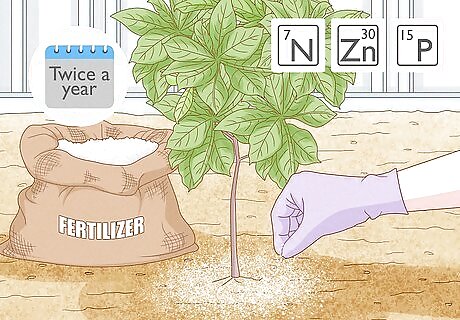
Fertilize your tree once or twice a year. Cashew trees don't need a whole lot of fertilization but if you do decide to use a fertilizer, it should contain the following ingredients. Nitrogen Zinc (as cashew trees can sometimes be zinc deficient.) Phosphorus

Support the tree with a stake. This is particularly important while the tree is young and if you live in a windy climate. Without doing this, it’s possible that the tree will be blown over and die. Staking up your tree is easily done with the right supplies.

Prune the tree often. This will ensure that you remove any dead or infected branches which, if left untouched, can spread to the rest of the tree. Pay special attention to overcrowded branching areas as pruning generously here will encourage high levels of growth. If diseased branches contaminate other parts of the tree, you risk having fruit infected and possibly the entire tree.
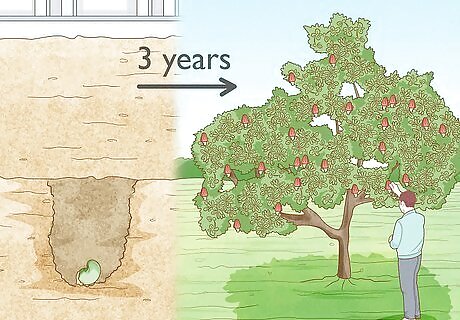
Remember to be patient. It takes three years total from sowing the seeds to harvesting the fruits off of the tree.
Harvesting the Cashews
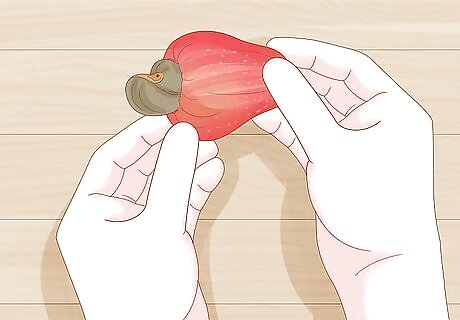
Pick the fruit once it is rosy red and the shell is a dark grey color. This color means that the fruit is ripe and the shell has fully formed. This will often occur around winter or the rainy season (depending on the type of climate you’re in).
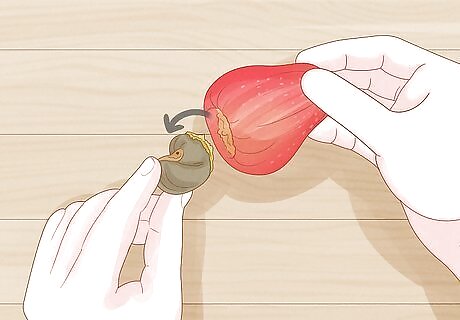
Separate the shell from the fruit (cashew apple). The shell has a kidney shape and is attached to the fruit on one end. Twisting the shell should remove it from the fruit. The fruit is edible also, is full of nutrients, and many people use it in smoothies or even eat it raw. You can store the shells for up to two years before further processing.

Roast the unprocessed shells on a pan covered in fine sand for 10-20 minutes. This is done because inside the shells is the nut, but also an extremely acidic, caustic oil that will burn you. It’s extremely important to cover the shells with either a lid or have them submerged completely in sand during this process. The temperature needs to be around 190 °C (374 °F) for this process. Anything higher will result in vaporization of the oil into fumes (which should be avoided) and a drying out of the nut inside. Use an old baking tray or a disposable one as the residue of the oil can be difficult to fully remove after.
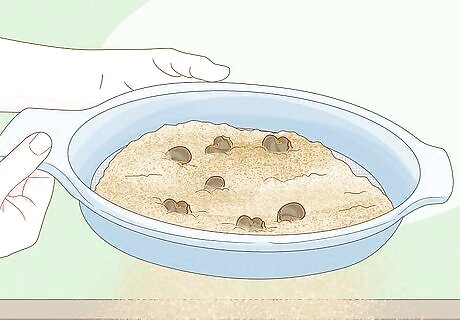
Sieve the shells out from the sand. The shells need to be washed in water with detergent before further handling to prevent any potential contact with the remaining oil. Be careful not to make contact with your eyes or face during this process due to the possibility of remaining oil.
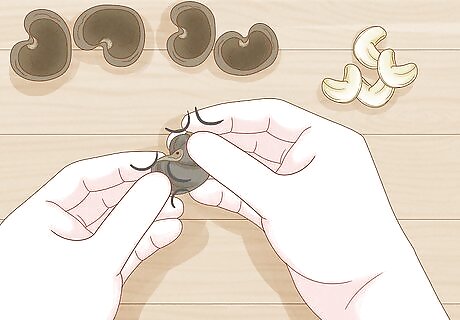
Crack the shells. The nuts are ready to be extracted from within. They will have a coating around them that needs to be peeled carefully using the edge of a knife before proceeding to the next step.

Roast the nuts in coconut oil for 5 minutes. This is done to get rid of any final residue of the toxic oil and ensure they are okay to eat. The oil should be heated to around 150 °C (302 °F). The nuts are now ready to be consumed.

















Comments
0 comment